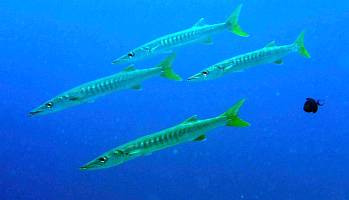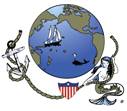UW Photo How-to
Destinations | Cruising Info | Underwater | Yacht Ocelot | Ocelot's Crew | Site Map
By Chris Hacking
Underwater photography is among the most difficult and most rewarding artistic
practices possible today. The difficulties and complexities of surface photography
are increased dramatically due to the peculiarities of the underwater world; I
believe even a professional surface photographer may initially have trouble
getting good pictures underwater. However, a good underwater photograph can
preserve an image never seen on the surface, and the difficulty of taking great
underwater pictures makes them all the more rare and precious.
 I strongly recommend learning underwater
photography with a digital camera. Digital cameras allow many features not
possible with film, such as storing each picture's statistics on the file and
allowing instant review of a picture to determine if it came out well.
Underwater digital cameras (or digital cameras with underwater cases) are easily
available and relatively inexpensive.
To learn more about why I prefer a digital camera,
click here!
I strongly recommend learning underwater
photography with a digital camera. Digital cameras allow many features not
possible with film, such as storing each picture's statistics on the file and
allowing instant review of a picture to determine if it came out well.
Underwater digital cameras (or digital cameras with underwater cases) are easily
available and relatively inexpensive.
To learn more about why I prefer a digital camera,
click here!
Underwater photography requires
equipment not used in surface photography. The camera must either be designed
waterproof or have an underwater housing. To take pictures anywhere except in
clear, shallow, brightly lit water, an external strobe is virtually a necessity.
Some special photographic modes (such as macro)
should be set up in certain ways for the best results underwater. Setting up
and using underwater photography equipment is also somewhat different
from doing so on the surface. Wondering what techniques I use for my underwater
photography? Click here!
Perhaps the most frustrating aspect of underwater
photography is backscatter. Backscatter, caused by light from a flash reflecting
off suspended particles, is a very common problem that destroys many otherwise
good underwater photographs. Avoiding backscatter is so
important that I've devoted an entire page to the subject.
To read more about the causes and prevention of backscatter,
click here.
Light, the essential element for photography,
attenuates very rapidly underwater. Even in the clearest water, visibility is
rarely more than 150' (45m), and photographically usable visibility is much
less (40' or 12m is a lot). An additional problem is that light from the red end
of the spectrum is absorbed very quickly by
water, while bluish light can permeate much further and yellow or green light is
more intermediate (this is why the deep ocean is blue, shallow water is aqua,
and a glass too small to absorb even red light appears clear). The human eye adjusts
to these color shifts automatically, but photos will appear very blue later, unless
a strobe was used to fill in the missing colors. However, there are several ways to
preserve a natural color balance, using filters, lights, film, digital cameras,
and modifications after a picture is taken. To learn more about light and color
underwater, click here.
Composition is as important underwater as on the
surface. However, it is much more difficult! The fluid environment allows easy
mobility in three dimensions, allowing shots from angles that would normally be
difficult on land. The same fluidity makes it difficult to hold position,
though, so an important part of underwater photography is being able to keep the
camera in position long enough to take the picture!
Getting a good background underwater can also be difficult; your targets are
often against something highly complicated, such as a coral reef, which can
result in an obscure and confusing image. To see my thoughts about
composing shots underwater, click here.
Why Digital? | Tools & Methods | Backscatter | Light & Color | Composing
Up | Reef Animals | UW Photo How-to | Scuba Diving
Top Level:
Home |
Destinations |
Cruising Info |
Underwater |
Boat Guests |
Ocelot |
Sue |
Jon |
Amanda |
Chris |
Site Map |
Make a Comment
 |
Lifetime
Commodores
of the
Seven Seas
Cruising
Association |
 |
|
If our information is useful,
you can help by making a donation
|
Copyright © 2000‑ Contact:
Jon and Sue Hacking -- HackingFamily.com, svOcelot.com.
All rights reserved.
 I strongly recommend learning underwater
photography with a digital camera. Digital cameras allow many features not
possible with film, such as storing each picture's statistics on the file and
allowing instant review of a picture to determine if it came out well.
Underwater digital cameras (or digital cameras with underwater cases) are easily
available and relatively inexpensive.
To learn more about why I prefer a digital camera,
click here!
I strongly recommend learning underwater
photography with a digital camera. Digital cameras allow many features not
possible with film, such as storing each picture's statistics on the file and
allowing instant review of a picture to determine if it came out well.
Underwater digital cameras (or digital cameras with underwater cases) are easily
available and relatively inexpensive.
To learn more about why I prefer a digital camera,
click here!
